9 min. reading
Juliy Cherevko
CEO paintit.ai

Contemporary interior design views walls as far more than structural boundaries; they are the primary canvases for defining a room's emotion, style, and architectural intent. An effective living room wall design strategy is the single most powerful tool for transforming your space. Today, the focus is on personalization, high aesthetic quality, and creating a living room highlight wall that transcends simple ornamentation. The era of mass-produced, generic art designed to simply blend into the background has ended, giving way to designs that are unique, colorful, and articulate a clear story.
Whether you're looking for simple living room wall design ideas or a comprehensive guide to permanent architectural paneling, this guide covers the expert strategies, from simple decor swaps to permanent installations. The shift toward personalized, unique choices reflecting the occupant's ethical priorities is paramount.
This list provides quick, actionable ideas drawn from expert design principles, perfect for anyone seeking fresh living room wall decor ideas or the principles for wall design for a living room.
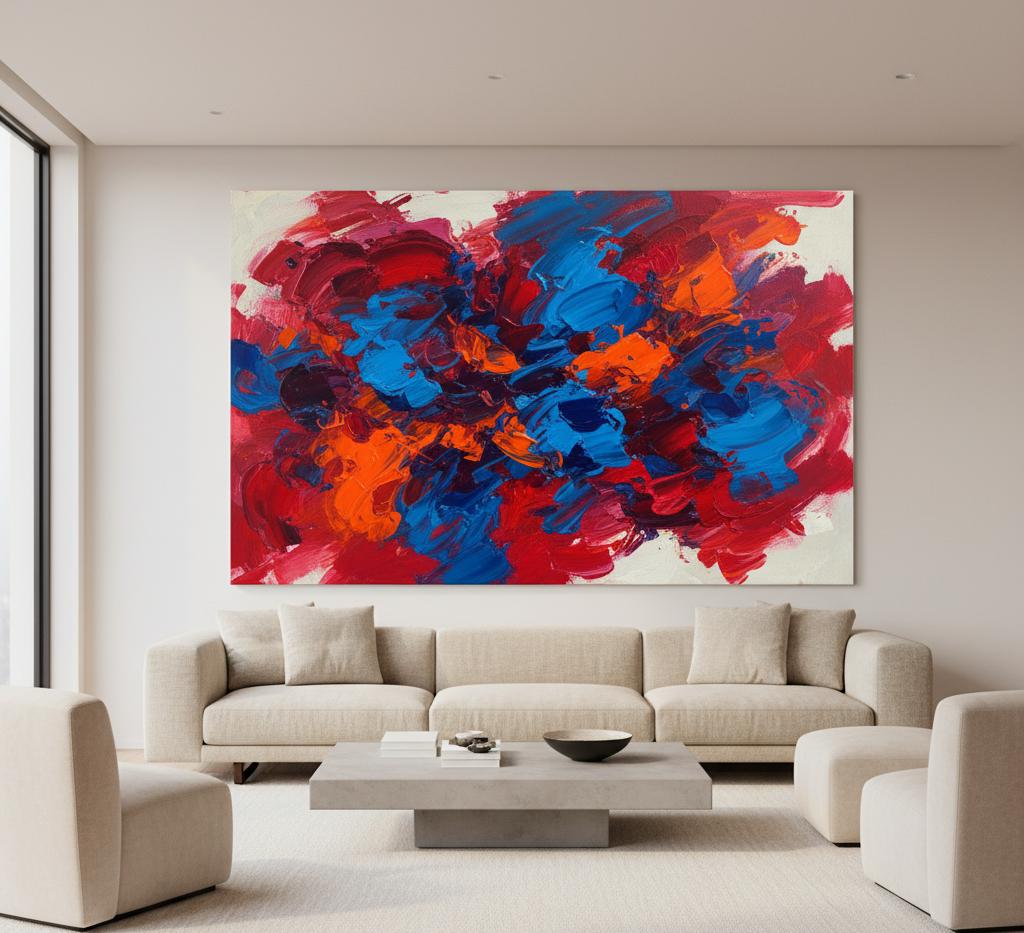
The simplest and most dramatic method for establishing a focal point is a single, large piece of artwork or an oversized mirror. A statement piece must command attention. It instantly transforms the visual dynamic of the room, adding light, depth, and elegance. The chosen piece often functions as the anchor, providing the foundational color scheme for the entire space.
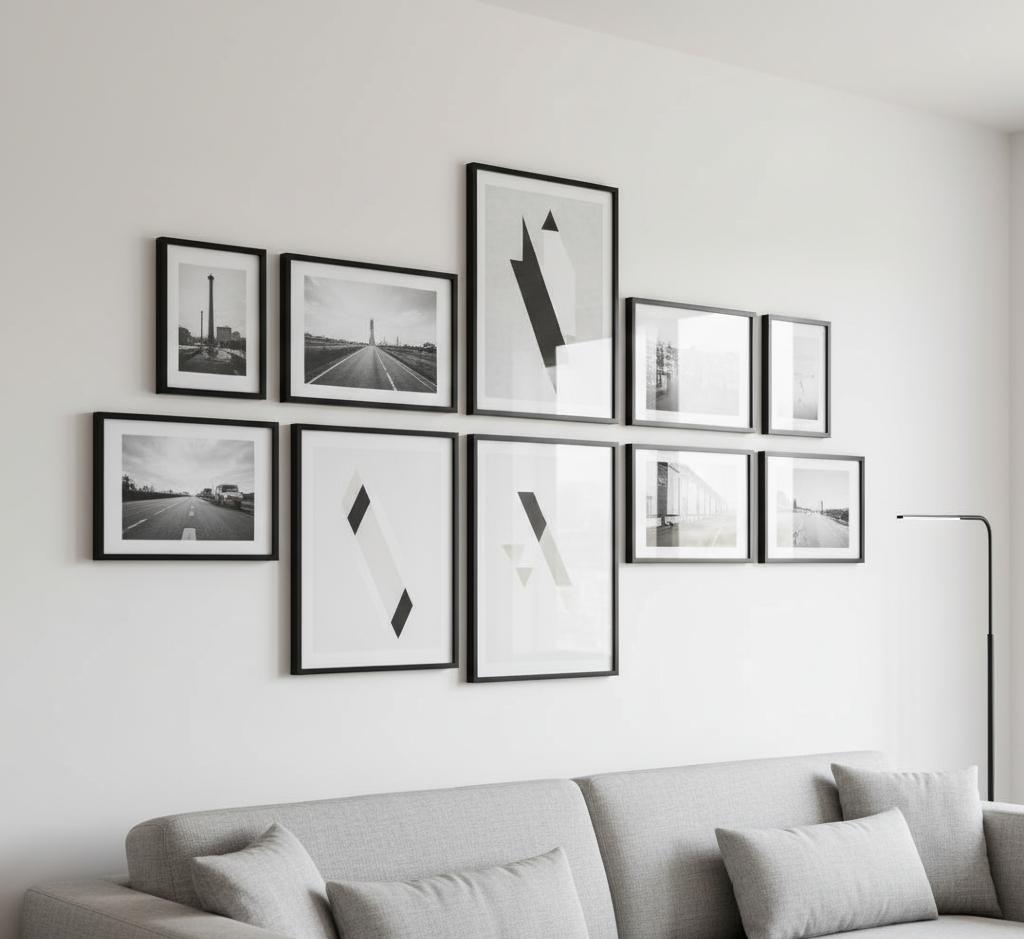
Gallery walls allow for the creation of a personalized narrative, compiling photos, diverse art, and memories. The key to success is maintaining visual balance and geometry. If the prints utilize different styles and colors, selecting uniform frames (e.g., all black or all white) helps introduce harmony.
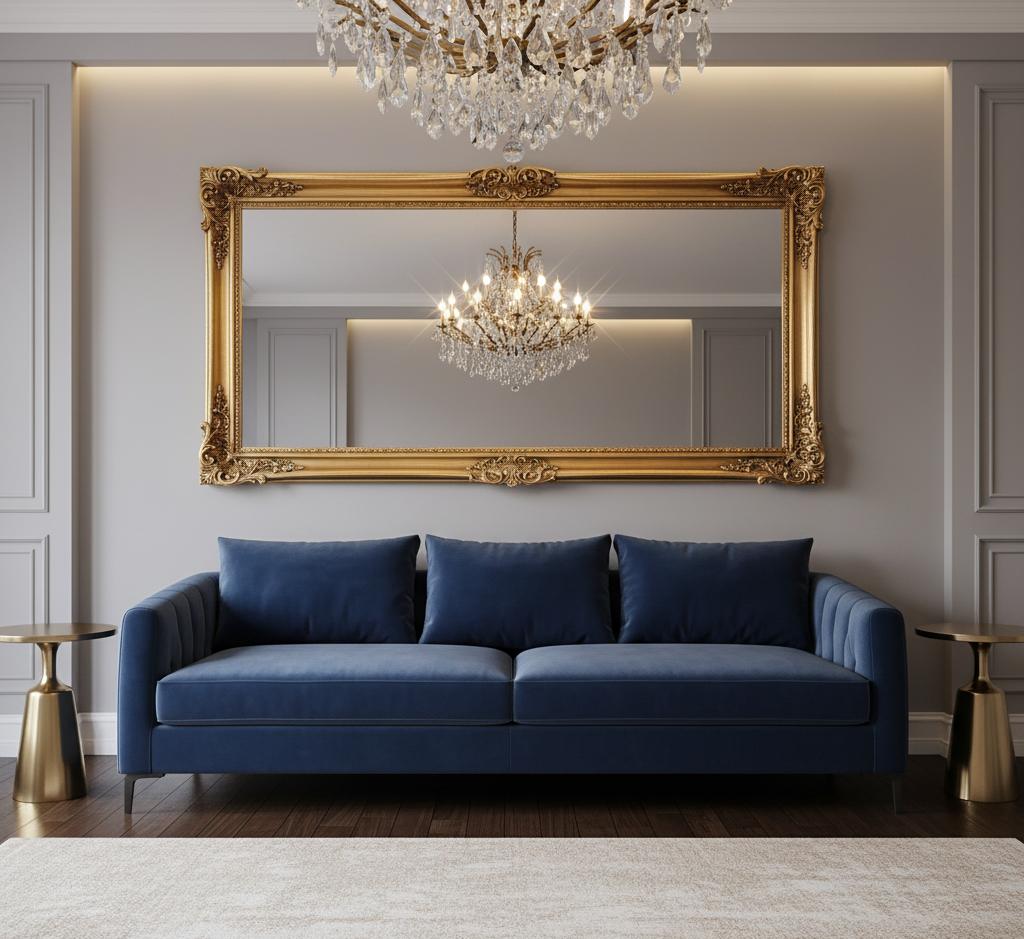
An oversized mirror, especially one with an ornate or unique frame, enhances the drama and sophistication, transforming the piece into a luxurious centerpiece. When used above key furniture like a sofa, the mirror should be appropriately scaled for balance. A standard guideline suggests the piece should cover approximately two-thirds to three-quarters of the width of the wall space it occupies.

In transitional spaces, where the challenge is darkness and tight dimensions, reflective surfaces are vital. A mirror gallery wall-composed entirely of various mirror shapes, sizes, and frames-is an effective, high-impact strategy to brighten the space and reflect light from multiple angles. Mirrors with metallic or backlit frames further amplify the luminosity.
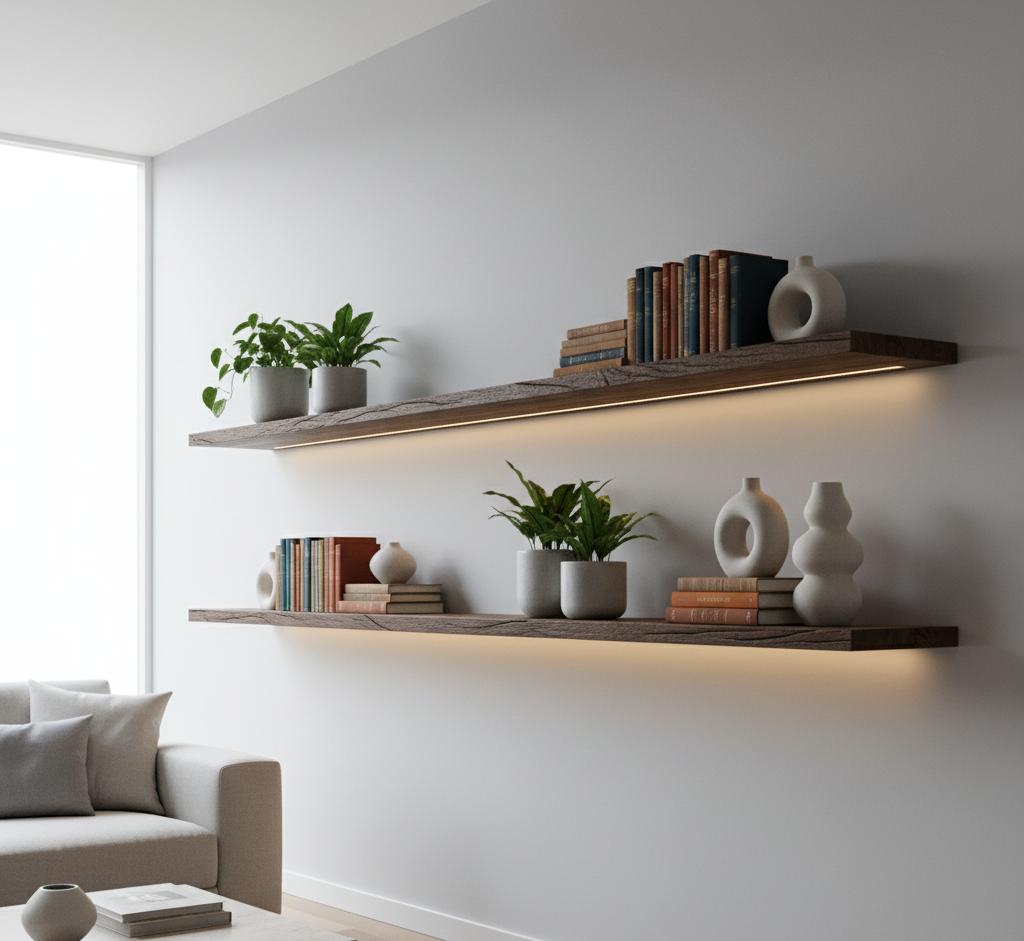
Floating shelves introduce instant visual interest and are highly versatile. Materials such as live-edge wood bring organic texture to modern farmhouse or rustic settings, while metal or glass finishes suit contemporary spaces. A strategic placement technique involves installing a single floating shelf that runs the entire length of a wall. This simple horizontal line can create an optical illusion that tricks the eye into seeing a more expansive room, adding a midcentury flair.
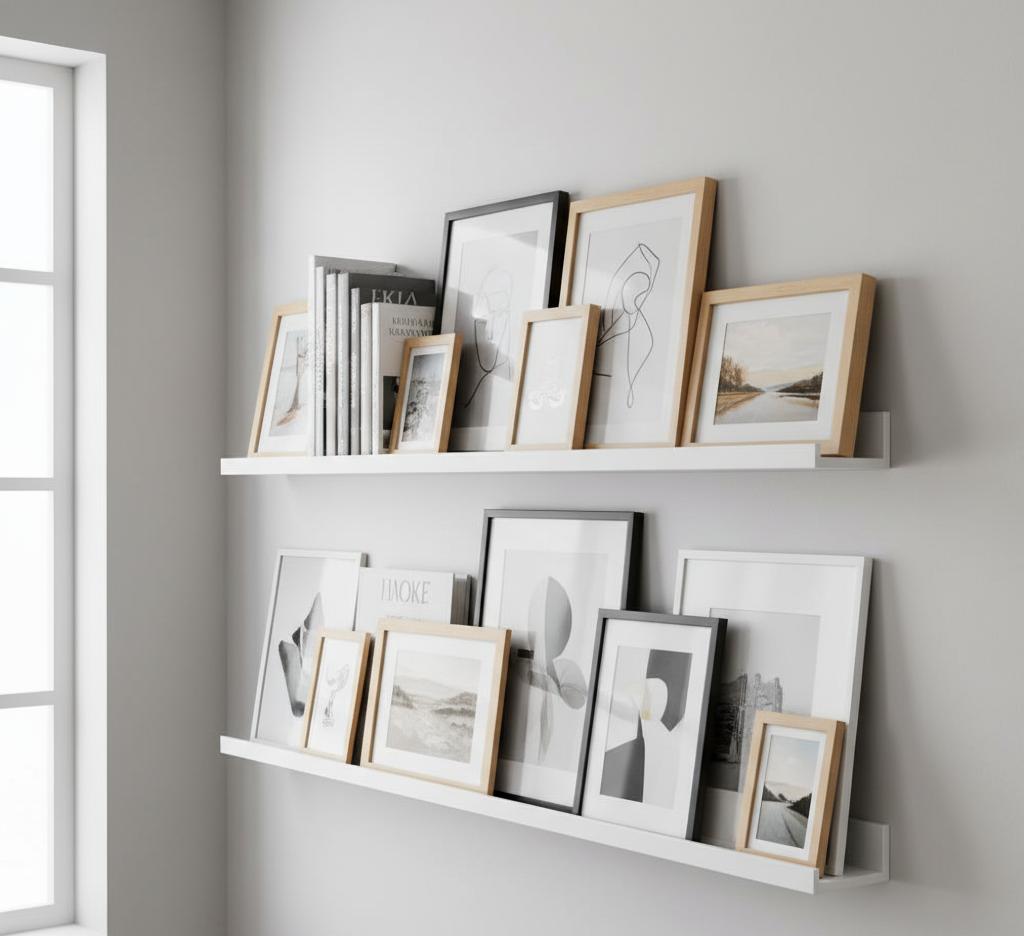
Picture ledges are a streamlined alternative to traditional floating shelves, featuring a small raised lip designed to keep artwork secure. They are especially practical for displaying oversized coffee table books or collections of souvenirs. Ledges offer the freedom of a gallery wall without the commitment of permanent hardware placement.
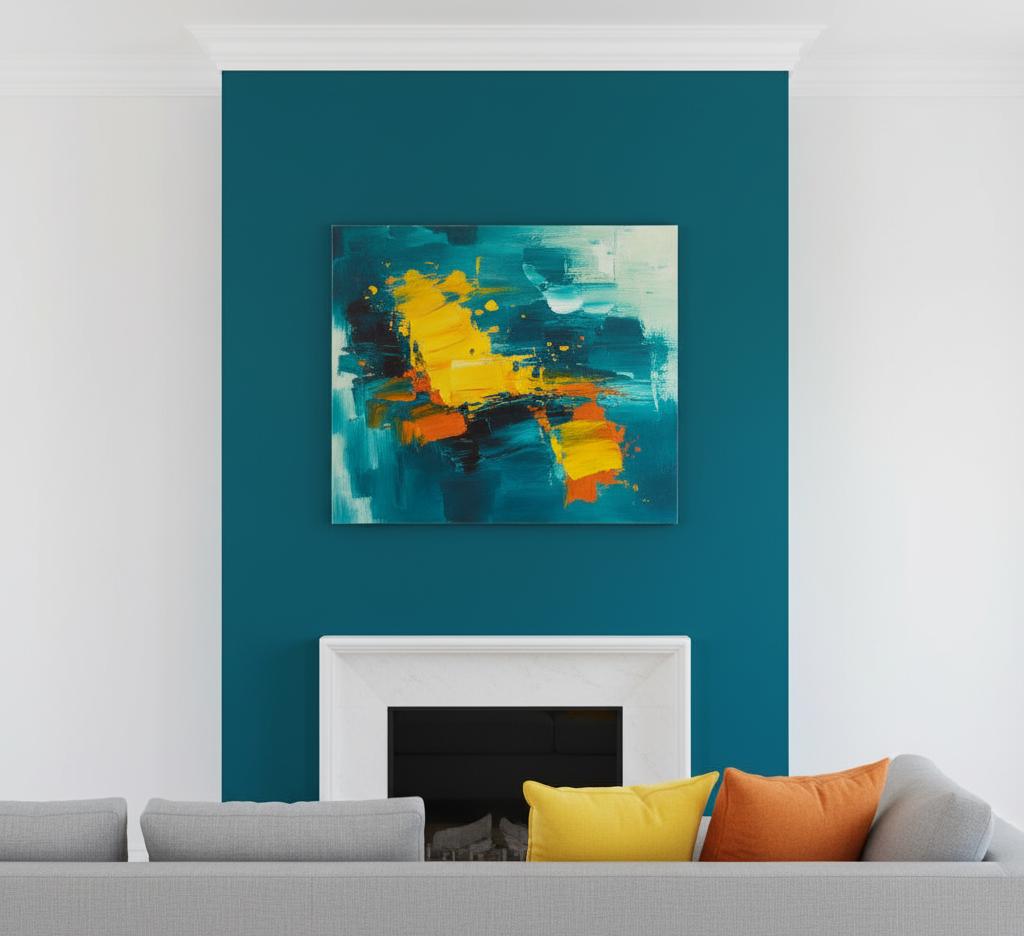
The selection and placement of color are fundamental to establishing the emotional tone of a room. A single accent color can be used on a feature wall, often derived directly from an anchor artwork, to ensure the piece truly pops. This strategy is applied within the 60-30-10 rule, where the accent color represents the final 10%.

Shiplap uses interlocking boards, traditionally about 6 inches wide, though extra-wide boards offer a cleaner, more contemporary appearance. Used as an accent wall, white shiplap can subtly highlight architectural features, drawing the eye upward for a sense of increased height and space.
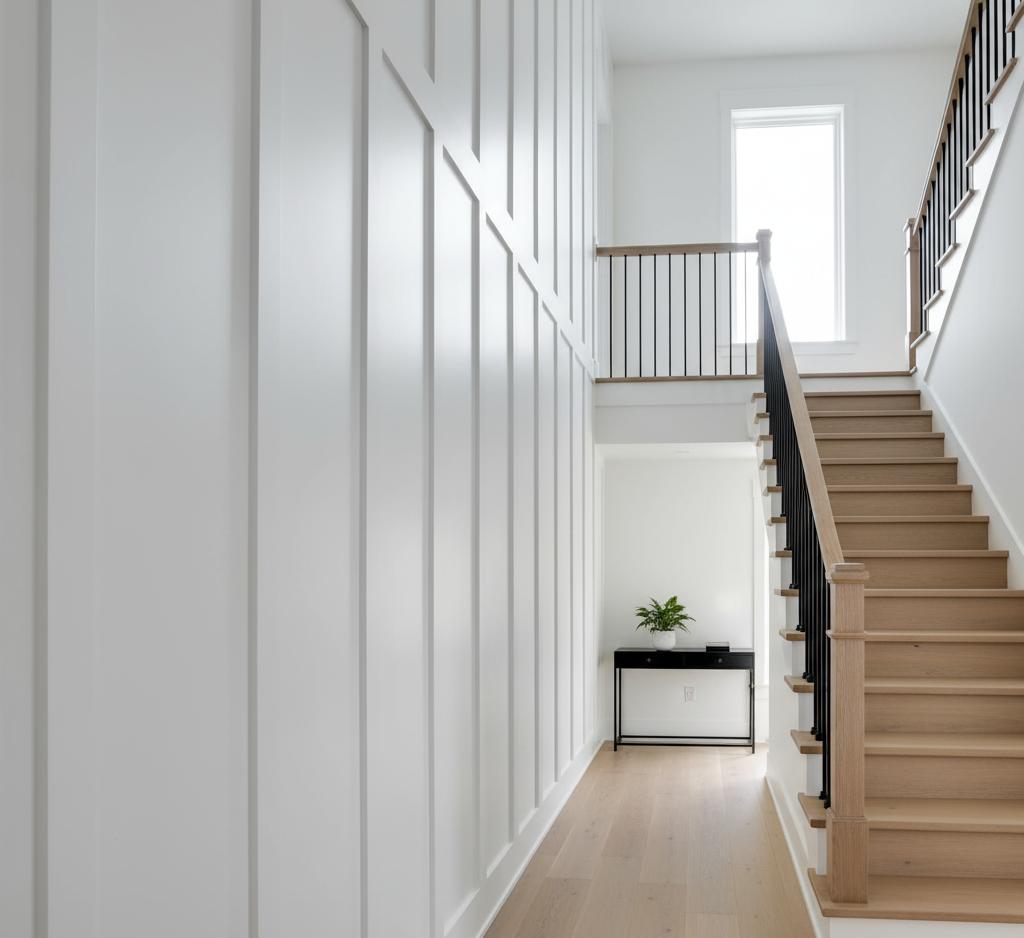
This versatile style is created by installing narrow strips (battens) over larger flat boards. Extending the board-and-batten treatment from floor-to-ceiling creates a strong vertical element that is highly effective on long walls or staircase walls in entryways.
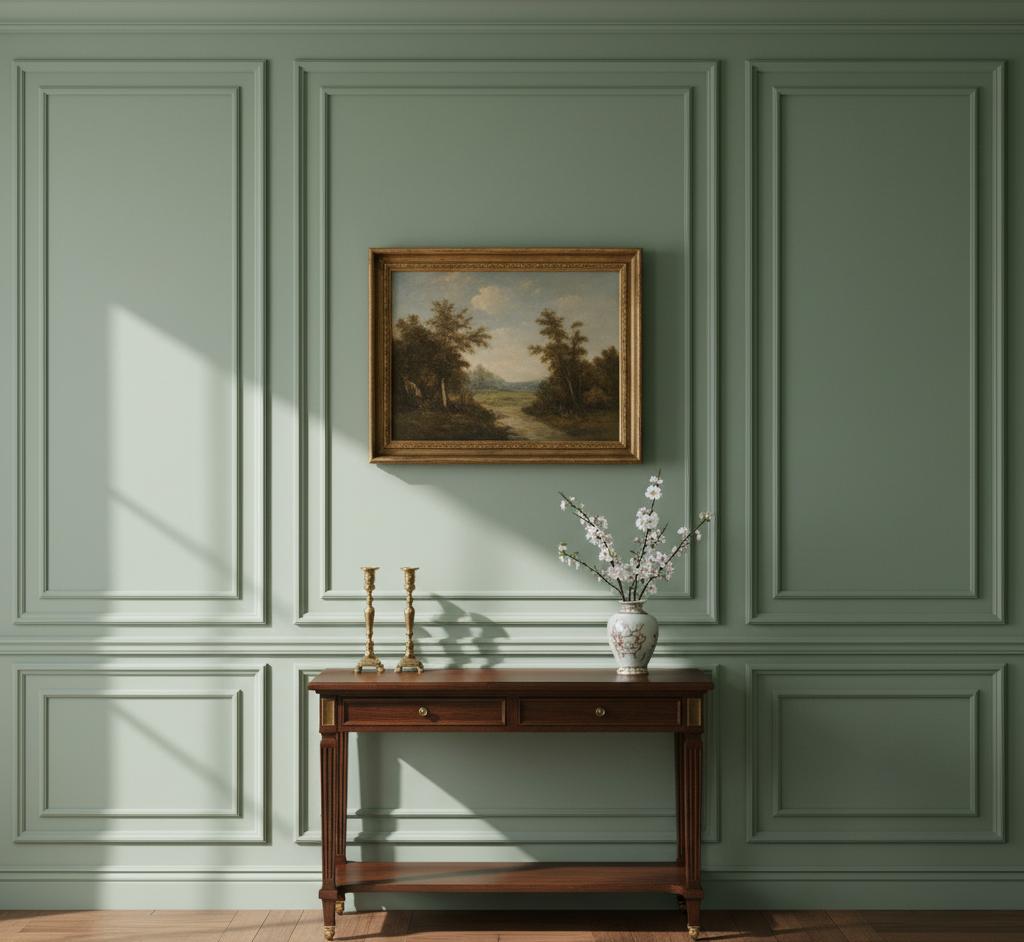
Traditional millwork involves applying molding to create a series of frame-like boxes on the wall. This simple technique instantly transforms a plain wall into an elegant feature element. Conversely, using a slightly different hue or a higher-gloss paint finish introduces subtle contrast and dimension.
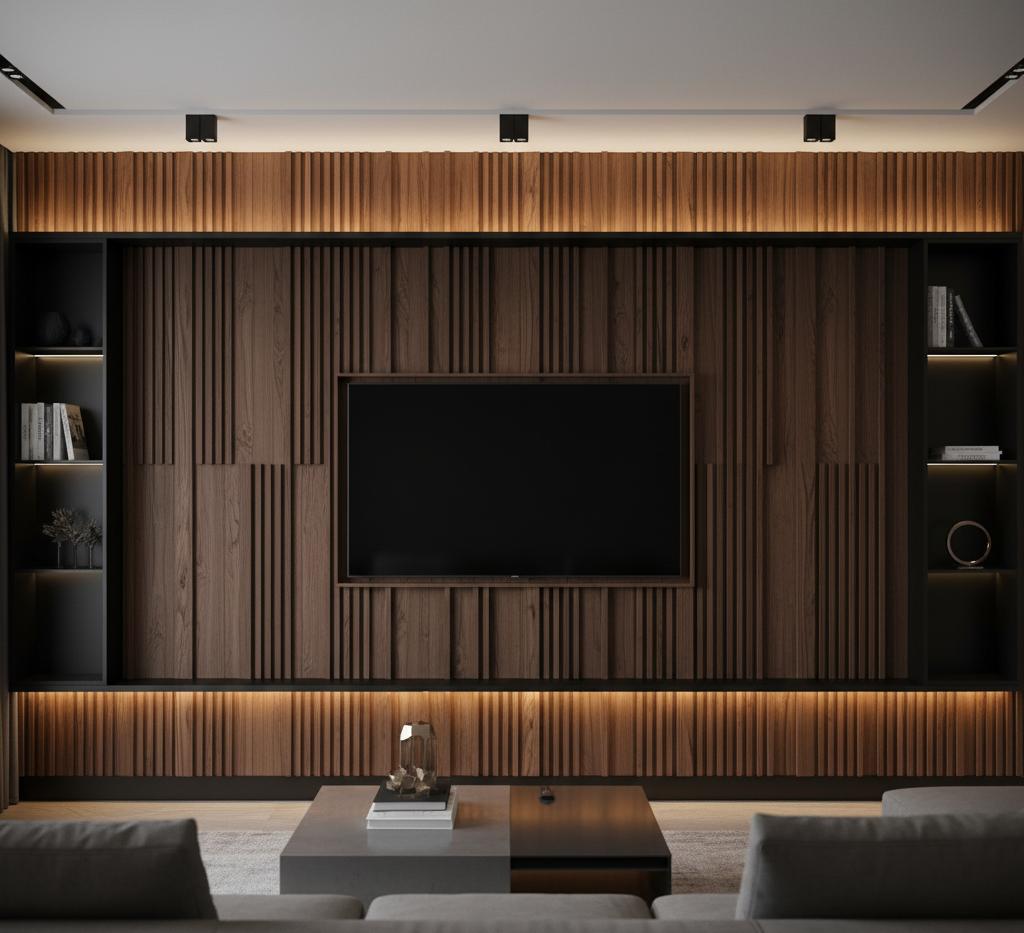
The use of 3D decorative wall panels represents a significant trend in contemporary design. Materials like louvered MDF panels or geometric wooden panels provide dynamic visual interest and a captivating interplay of shadows and depth. These panels function essentially as built-in, non-removable structural art. You can visualize how different 3D textures will look using an AI room design tool.
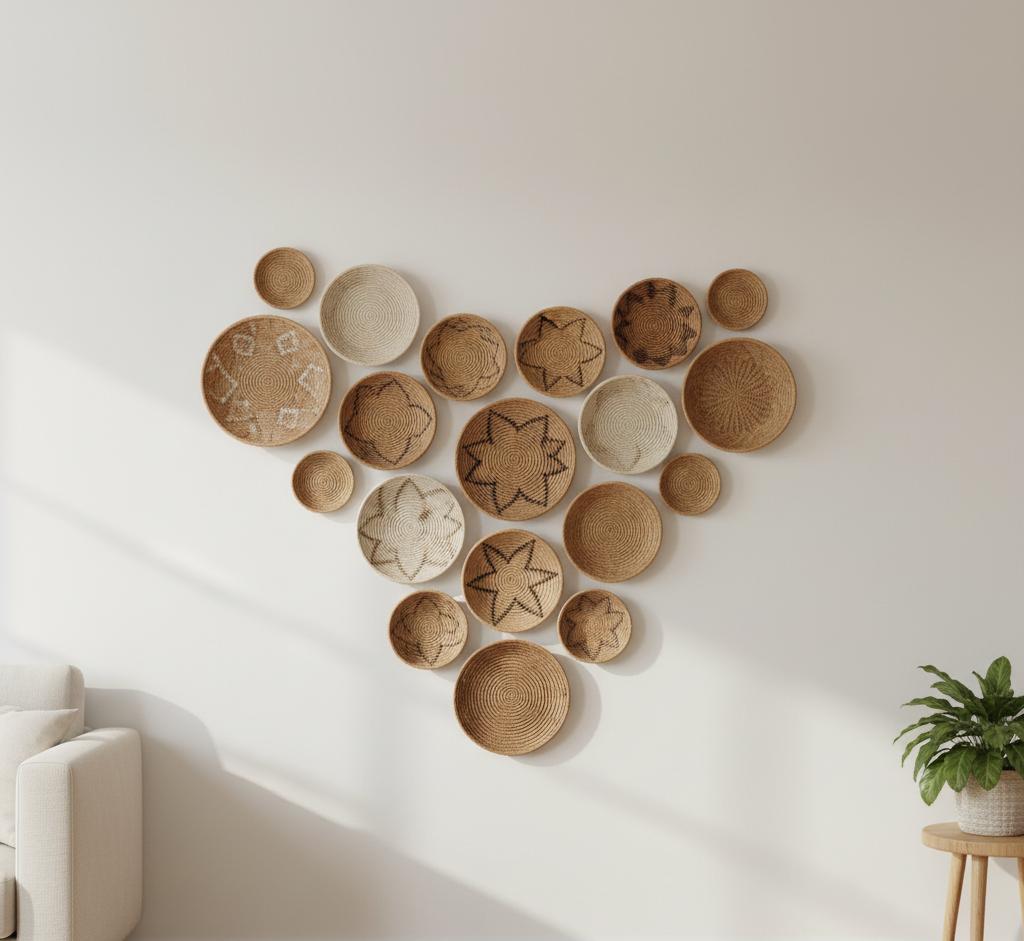
When confronted with a large, empty wall, handwoven wall baskets are excellent, cost-effective items. Arranged in alternating patterns or stacked vertically, these lightweight items introduce texture and a natural aesthetic.
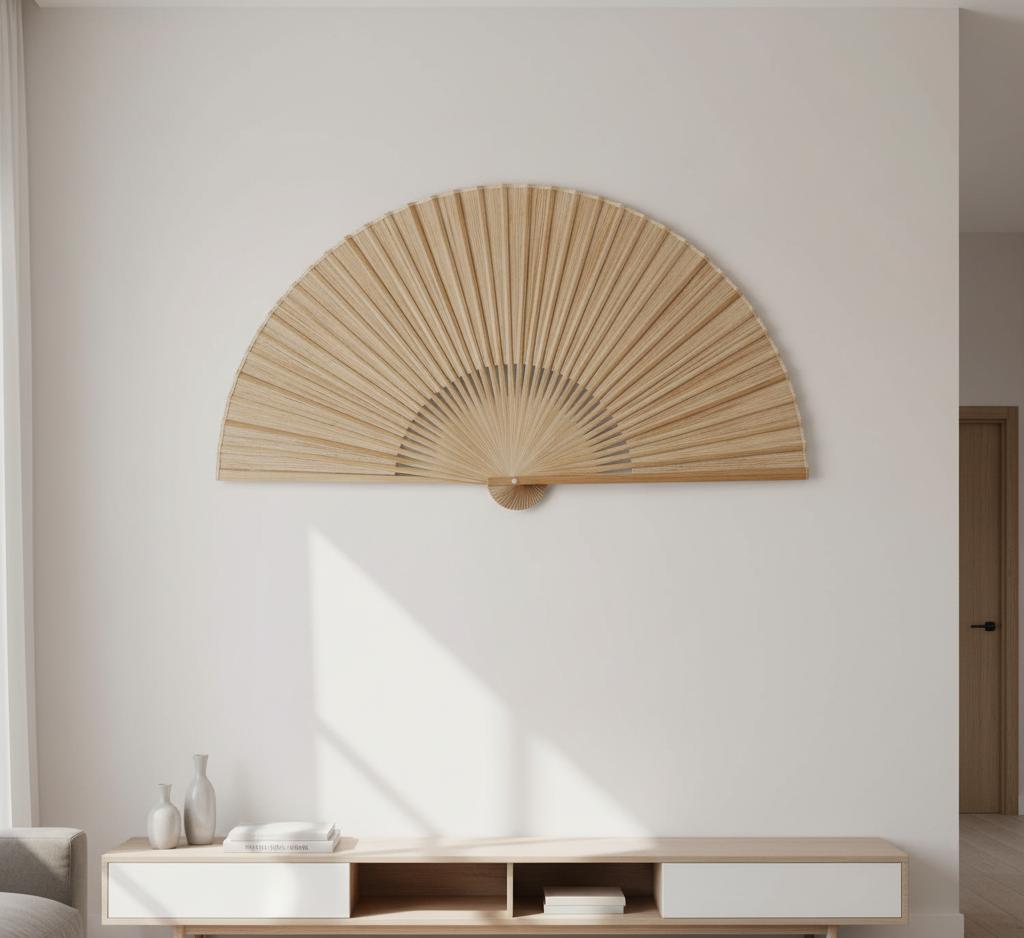
A large bamboo folding fan, placed high and centered, can act as a natural, affordable focal point. The key to success is leveraging the texture and material (e.g., bamboo, seagrass) to achieve depth without significant expense.

Bohemian design thrives on texture and layering. To achieve the intended ultimate boho vibe, wall art is often layered with additional decorative elements, such as woven wall hangings or macrame.
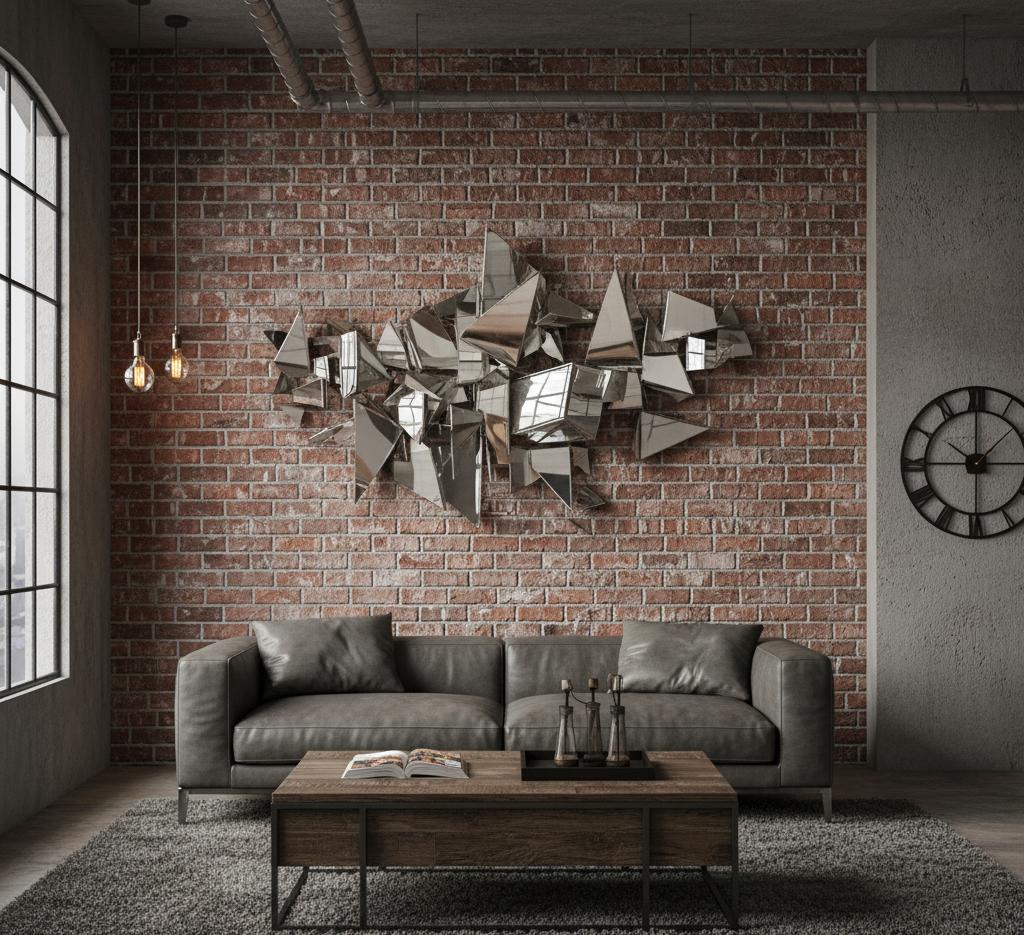
The inclusion of reflective metal wall sculptures introduces dynamic visual interest. This is especially effective in industrial decor, where abstract prints enhanced with metallic details complement the raw, mechanical features characteristic of the style.
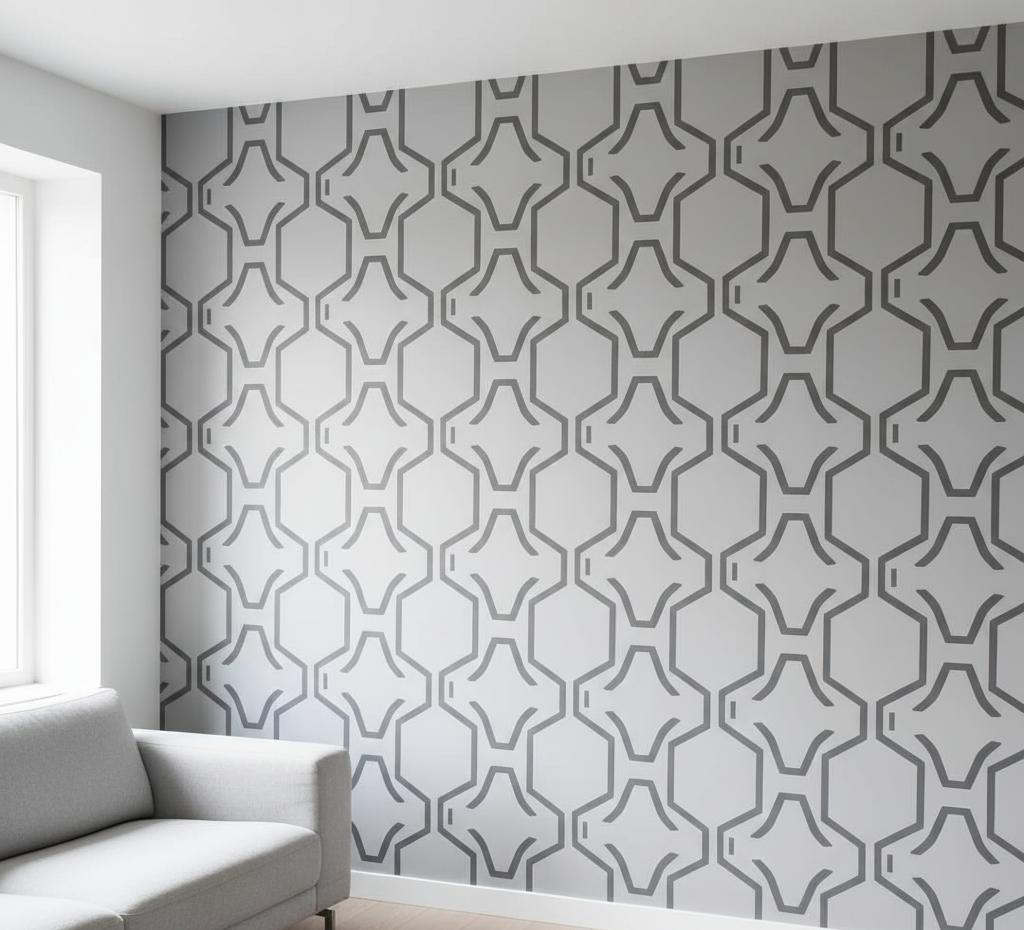
Large wall stencils provide a cost-effective method to replicate the intricate look of expensive wallpaper or millwork panels. For custom, large-scale graphic designs, techniques involving overhead projectors can be used to blueprint the pattern onto the wall before painting. You can test color combinations first with an AI house painter visualizer.

Old curtains, scarves, or bedsheets can be reused as tapestries. By painting abstract designs or mandalas onto the fabric, a unique and custom wall hanging can be created, embodying the current trend for individualized, comforting art.
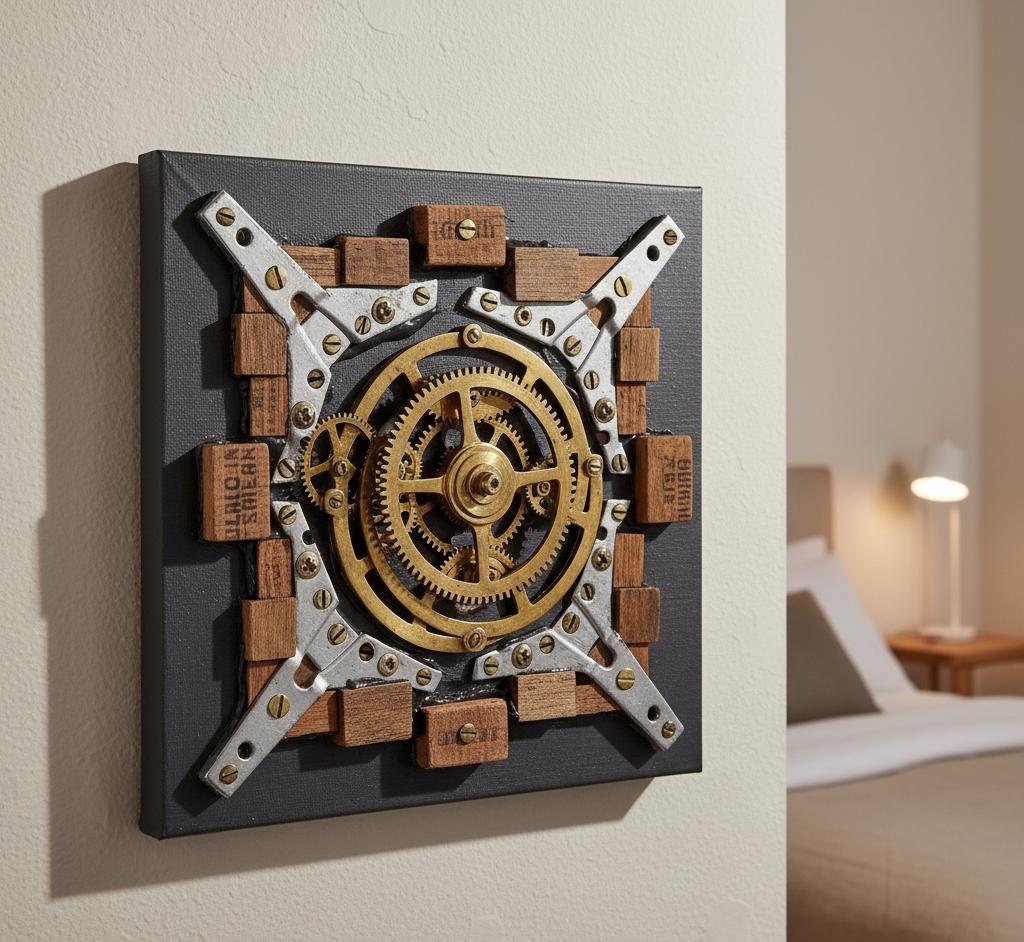
This approach transforms discarded items into textural, personal wall hangings. Designers can affix found objects-such as decorative metal sheeting or recycled wood-onto a base to create a unique 3D assemblage piece.
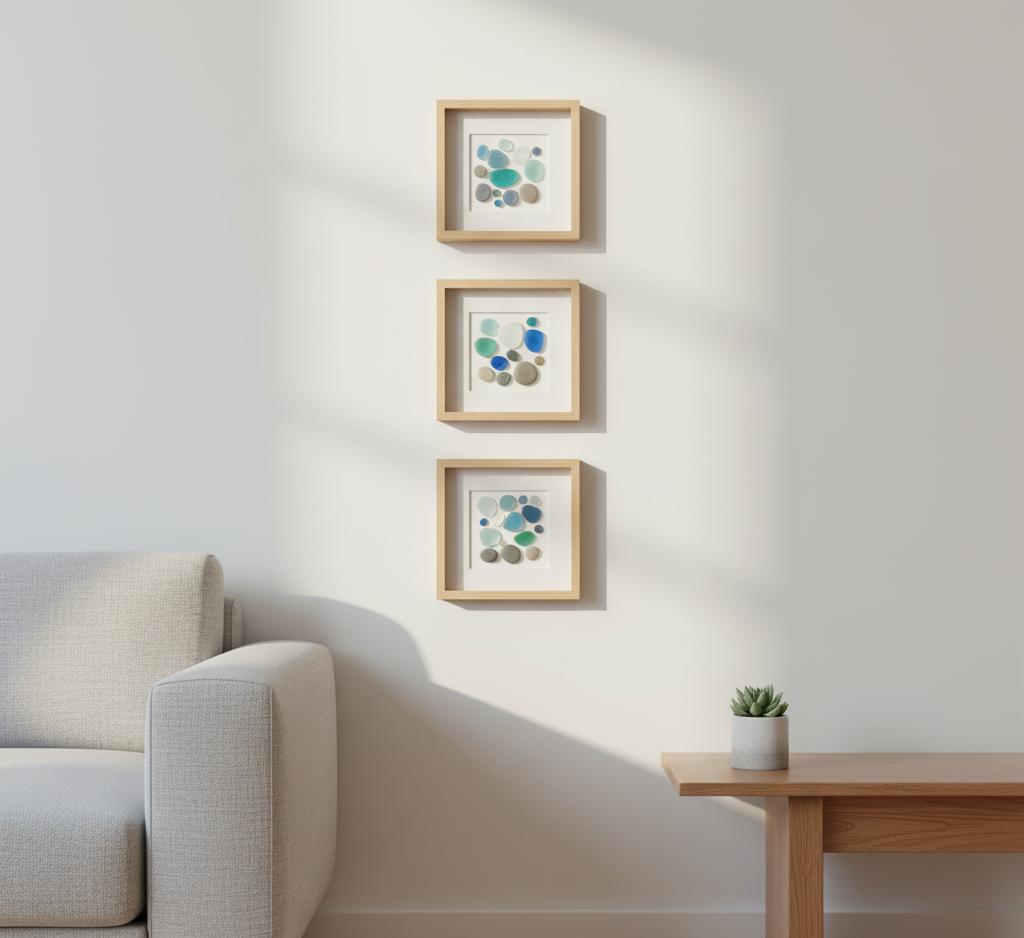
Collected natural elements like shells, rocks, or sea glass can be attached to wooden panels to create custom, nature-inspired framed art. This connects the interior to the external environment, enhancing well-being within the living space.

In narrow corridors, a monochromatic color palette works exceptionally well. By selecting a combination of light and neutral colors, the space avoids visual fragmentation and creates an essential sense of airiness and openness.
The creation of a powerful focal point is paramount in sophisticated design. Establishing a definitive feature wall grounds the furniture arrangement.
Incorrect hanging height is a common mistake that disconnects artwork from the furniture and the people using the space.
Seated Eye Level: In living rooms, the center of the artwork must be positioned lower, typically 48-56 inches from the floor, to keep art visible and comfortable to view while seated.
Breathing Room: Maintain a gap of at least 6-12 inches between the bottom of the frame and the top of a sofa, console, or table. This proportional adherence ensures the artwork settles naturally into the room's rhythm.
Gallery Spacing: To ensure the arrangement does not appear crowded, the space between all pieces should remain consistently close to 3 inches.
| Wall Feature | Standard Height/Position | Design Rationale |
| Art Centerline (Seated View) | 48-56 inches from the floor | Keeps art visible and comfortable to view when the room's use is predominantly seated (Living/Dining Rooms) |
| Art Above Furniture | 6-12 inches above the top edge of the item (sofa, console) | Provides necessary "breathing room" and integrates the art visually with the furniture piece |
| Gallery Wall Spacing | Approximately 3 inches between frames | Prevents crowding and maintains visual cohesion across eclectic collections |
Architectural wall treatments offer a sophisticated, permanent solution for introducing texture, depth, and character. Modern solutions, particularly 3D geometric or louvered panels, function essentially as built-in, non-removable structural art. They create a dynamic interplay of light and shadow, providing unmatched durability and architectural longevity.
Custom built-ins represent the pinnacle of integrated functionality and personalization. These systems transform quiet corners, overlooked walls, and awkward niches into highly purposeful, memorable spaces. Custom wall units are commonly employed to flank architectural elements, such as a stacked stone fireplace. This is a core part of professional AI-driven architectural generation and interior planning.
The interior wall design for a hall requires a specialized strategy, as these are often narrow, transitional spaces. The goal is to maximize light and space perception, making these high-traffic areas feel larger, brighter, and immediately inviting.
The manipulation of color and paint techniques is the most effective way to visually expand a constricted space.
Color: A monochromatic color palette (using light and neutral colors) facilitates a smoother flow of light and prevents visual fragmentation, creating an essential sense of airiness. Painting the walls halfway up (known as a dado) visually draws the eye lengthways down the corridor, effectively elongating the entire space.
Mirrors: Mirrors are indispensable tools in spatial strategy, capable of instantly adding depth, luminosity, and the illusion of increased square footage. Placing a large mirror directly opposite a window or key light fixture is critical to capture and reflect incoming light.
In a narrow hall, the selection of artwork must prioritize verticality and simplicity. Vertical artwork creates a strong visual pull upward, which is critical for generating the illusion of a taller, more expansive space. The sophisticated approach is to avoid multiple small pictures and opt for one oversized piece of vertical art to create a singular, strong statement.
The selection and placement of color are fundamental to controlling light distribution and establishing the emotional tone of a room.
Foundational Palette: The walls themselves form the largest canvas. Lighter shades-such as whites, creams, or pastels-are essential as they reflect significantly more natural light, making spaces appear brighter and visually more expansive.
The 60-30-10 Rule: To achieve a cohesive and harmonious palette that ties the entire room together, the 60-30-10 rule is employed:
60% Dominant Color: Applied to the largest surfaces, such as the walls and major furniture (sofa).
30% Secondary Color: Applied to secondary elements, such as drapes, rugs, or architectural features.
10% Accent Color: This boldest color is derived directly from the anchor artwork and is applied to smaller decorative elements like throws, cushions, and specific art details.
The best wall design for a living room is one that establishes a clear focal point and reflects your personal style. This can be a single, large statement piece of art, a meticulously curated gallery wall, or an architectural feature wall using 3D paneling or wainscoting.
The wall chosen for a living room highlight wall should be the wall that draws the eye upon entering the room. This is typically the wall behind the sofa, the fireplace, or the main entertainment unit. The strategy is to establish a focal point that grounds the furniture arrangement.
Simple living room wall decor ideas that are high-impact include hanging an oversized mirror (two-thirds the width of the furniture), creating a flexible display with picture ledges, arranging a cluster of woven baskets for texture, or using a large wall stencil to mimic wallpaper.
For an interior wall design for a hall, focus on spatial compensation. Use a monochromatic paint scheme to maximize light reflection, strategically place large mirrors opposite light sources, and prioritize tall, vertical artwork to draw the eye upward and counteract the feeling of compression.
The successful interior wall design for a living room requires a blend of aesthetic innovation and disciplined spatial strategy.
Whether creating a focal point with a single statement piece or installing permanent 3D architectural panels, adherence to the technical rules of placement-such as hanging art at a seated eye level (48-56 inches) and maintaining 6-12 inches of "breathing room" above furniture-is paramount for seamless integration. In transitional areas like hallways, the strategy shifts to compensation, leveraging monochromatic color palettes and oversized mirrors to maximize the perception of depth and brightness.

9 min read
Transform your space with our expert guide to living room wall design. Discover 20+ simple decor ideas, highlight wall strategies, and technical rules for art placement
Juliy Cherevko
CEO paintit.ai

7 min read
Analysis of the best RoomGPT Alternatives. Discover why Decoratly, Spacely AI, and Paintit.ai outperform the competition with superior accuracy and hybrid monetization. Choose your tool
Juliy Cherevko
CEO paintit.ai

9 min read
Agentic AI Commerce is here. Discover how autonomous AI agents are moving interior design from "mood board" to "project realized" and what it means for you.
Juliy Cherevko
CEO paintit.ai

6 min read
Agentic AI is moving e-commerce from generative tools to autonomous actors. Learn the $5T opportunity, the "Gen AI Paradox," and the 3-step strategy to survive.
Juliy Cherevko
CEO paintit.ai